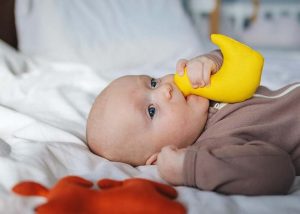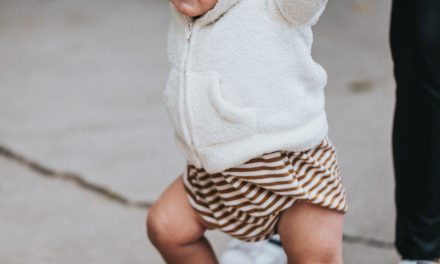Are you planning to move to bottle feeding your baby? Whether your plan is to formula feed or use expressed breastmilk in feeding your infant, you will need some bottle-feeding essentials to begin.
Being a new mother can be stressful, regardless of the number of parenting and baby care guides you read. Let us try to make your bottle-feeding journey a tad bit simpler. Here’s a list of all the essentials required for bottle feeding and some helpful advice on getting started.
Bottle-Feeding Essentials You Must Have
Good Quality Feeding Bottles
You will need at least six bottles to use throughout the day (and night). There are several types available in the market. Plastic bottles are the most common type, but you might want to look at some eco-friendly alternatives.
Well-Sized Soft Nipples
The nipple fits into the bottle lid and allows the passage of milk. You can choose from the various types of nipples available. To make it easier for the baby, use latex nipples because they are softer.
Formula & Formula Dispenser
If you want to use a formula to bottle-feed your child, use one with clean ingredients. Seek advice from your pediatrician.
The use of a formula dispenser is to make the formula. Make sure the dispenser markings are understandable. Also, ensure that the solution doesn’t have any lumps on dissolving.
Breast Pump
Buy a breast pump if you wish to feed expressed breast milk to your baby. You can even combination feed your little one. The breast pump is a lifesaver for working moms and during nights when you want the dad to take over feeding duties.
Bottle Washing Solution
After every feed, wash the bottle with bottle soap and warm water. If you have enough backup bottles, you can wash them all at once.
Bottle/Nipple Brush
A bottle/nipple brush helps in cleaning the bottles and nipples. It scrubs away any leftovers inside the bottle and nipple.
Bottle Drying Rack
It is essential to dry the bottle and its accessories post-cleaning. Using a bottle drying rack is a hygienic way to dry your baby’s bottle accessories.
Bottle Sterilizer
After cleaning the bottle, do not forget to sterilize it in a bottle sterilizer. It helps kill any germs remaining in the bottle. If you do not wish to invest in a sterilizer, then boiling the bottles and nipples in water is also a way to sterilize them.
More Bottle-Feeding Essentials
Bottle Warmer
You can heat the milk in the bottle using a bottle warmer (if you use a pre-prepared formula). It is helpful when you’re traveling or when using refrigerated expressed milk.
Burp Cloths
There is a high possibility for your baby to burp out some milk after feeding. Use cute burp cloths to clean the mess.
Nursing Pillow
Initially, bottle feeding can be uncomfortable for you and the baby when it comes to the sitting position. Use nursing pillows to give your little one and you a comfortable posture and ensure your back is straight.
Smooth Transition From Breastfeeding To Bottle-Feeding
Before we discuss how to introduce your baby to a bottle, let’s address the most popular question, “When to start?”.
According to lactation experts, there’s no perfect time to start. But one should wait until establishing a steady breast milk supply. Pediatricians recommend introducing bottles between two and four weeks after birth.
In the beginning, you should ensure to use a bottle once a day with multiple breastfeeding sessions. It helps the baby become familiar with an artificial nipple while breastfeeding. If you see your baby receiving the bottle well, make sure you pump your breast milk to protect your milk supply. After all, the transition should be easy for both of you.
Over a few months, you can increase bottle-feeding sessions while using a breast pump to maintain your milk supply. Try warming the nipples slightly to give them a familiar feel.
Understanding When Your Baby Is Hungry
Undoubtedly, knowing about bottle feeding essentials is necessary before getting started. Nevertheless, understanding your baby’s hunger could be equally challenging for a new mother. Look for these signs to know when the little one needs food:

Babies bringing objects to their mouth can be a potential sign they may be hungry.
- Turning their head to either side (as if searching for food)
- Drooling more, sticking out their tongue, and smacking their lips
- Making sucking motions with the mouth
- Opening and closing mouth frequently
- Sucking on their fingers, clothing, or hands
- Giving a distressed look or furrowed brow
- Staring at you consistently by following their eyes as you move around the room.
- Crying in frustration and hunger
Starting bottle-feeding on time would be easier for your baby to familiarize themselves with artificial nipples. While they might be used to pacifiers, introducing bottles can be more challenging after 6-8 weeks from birth.
Get all bottle-feeding essentials before beginning your child’s bottle-feeding journey for a smooth and happy feeding experience.
Happy bottle feeding!






